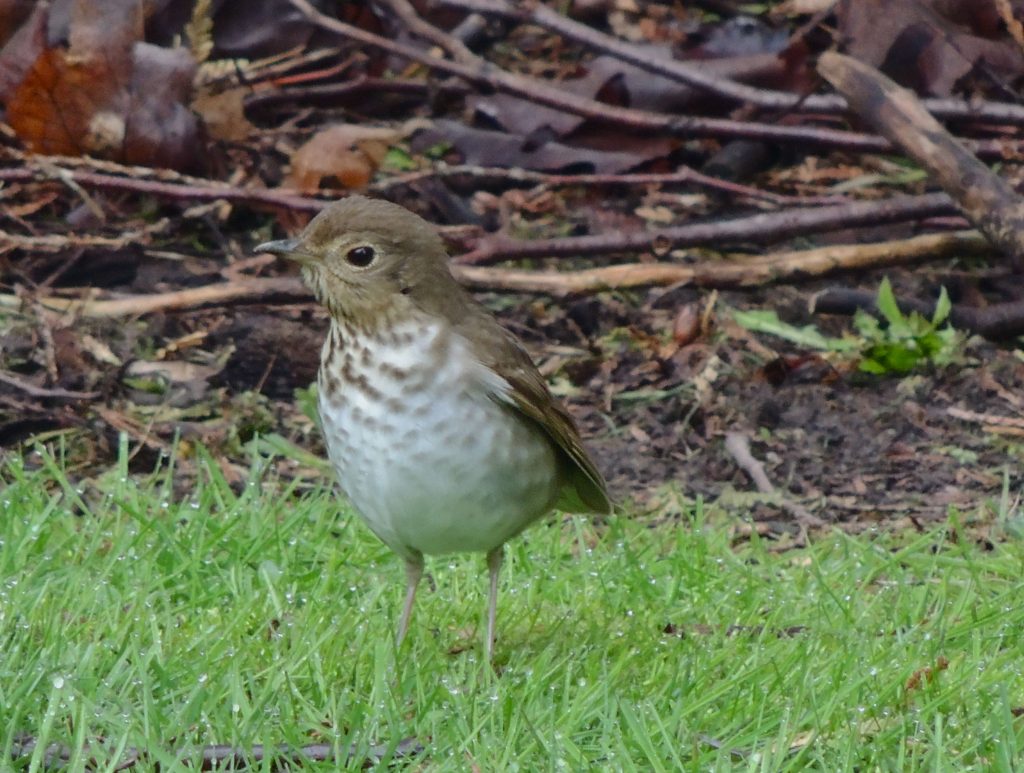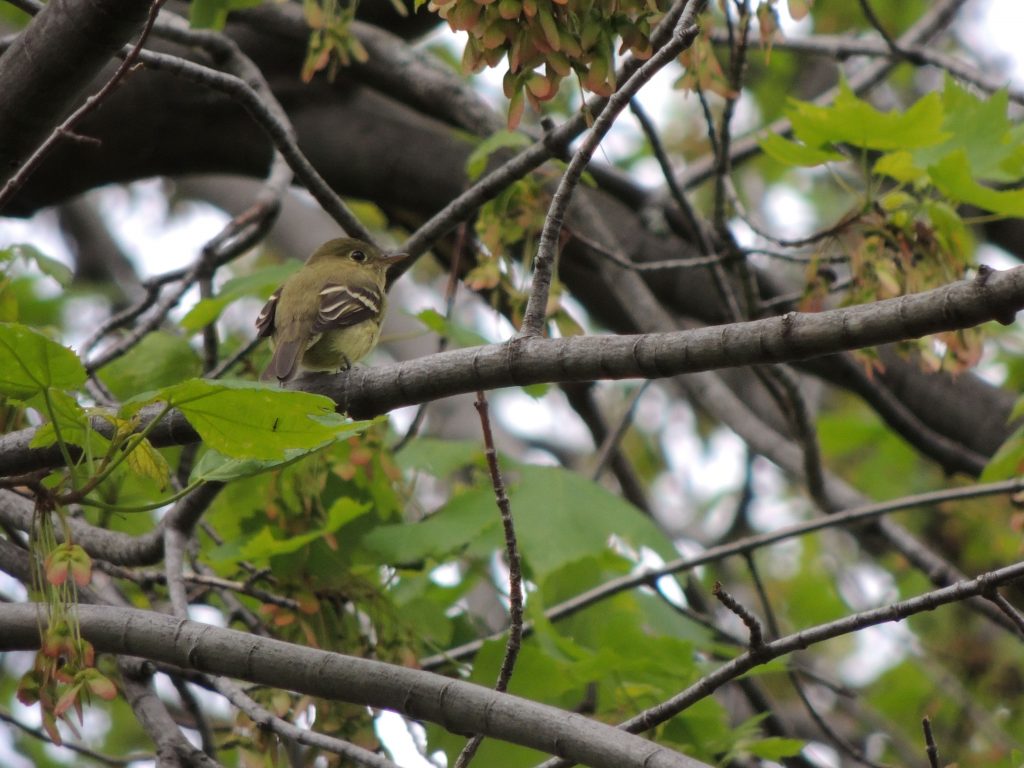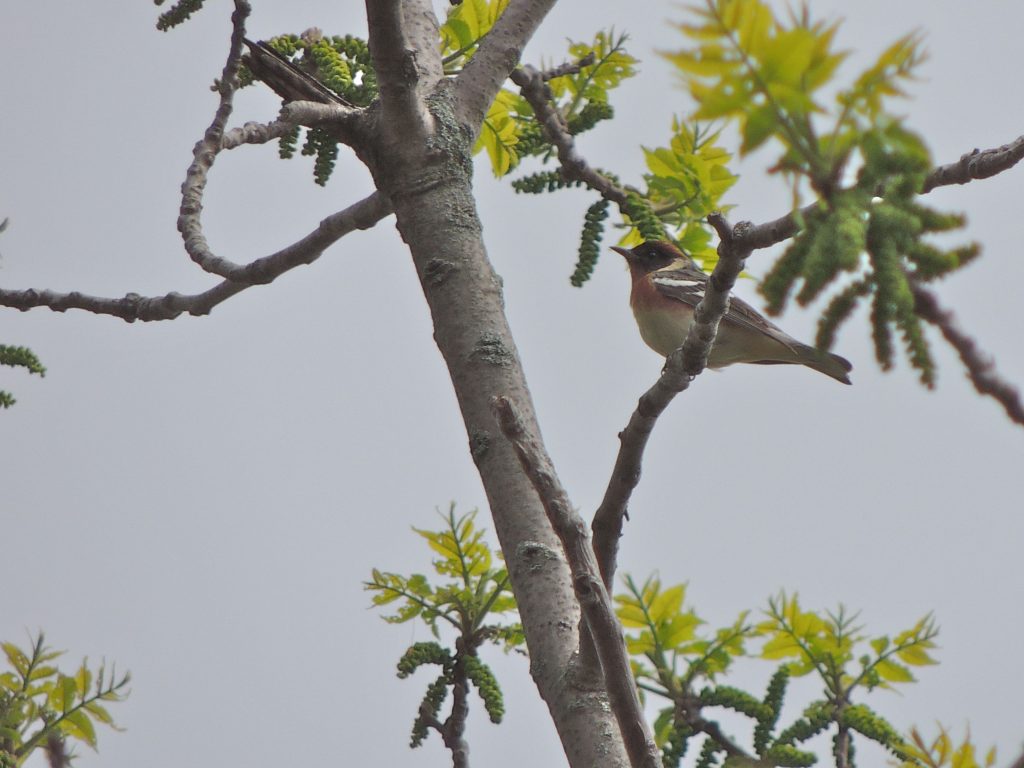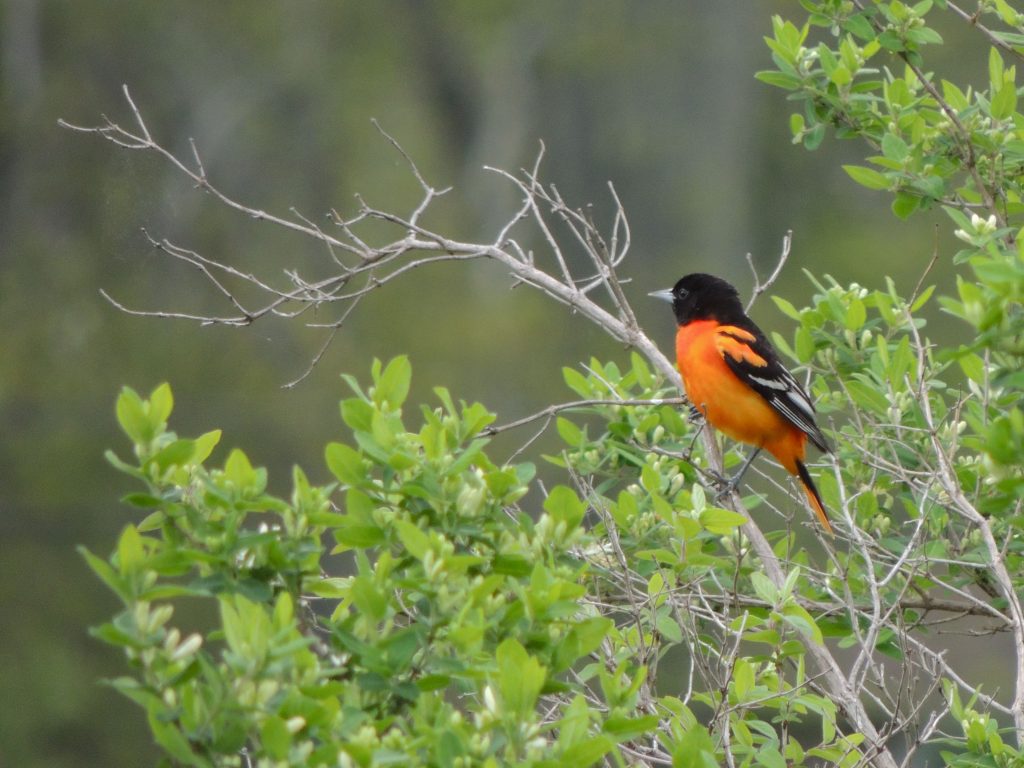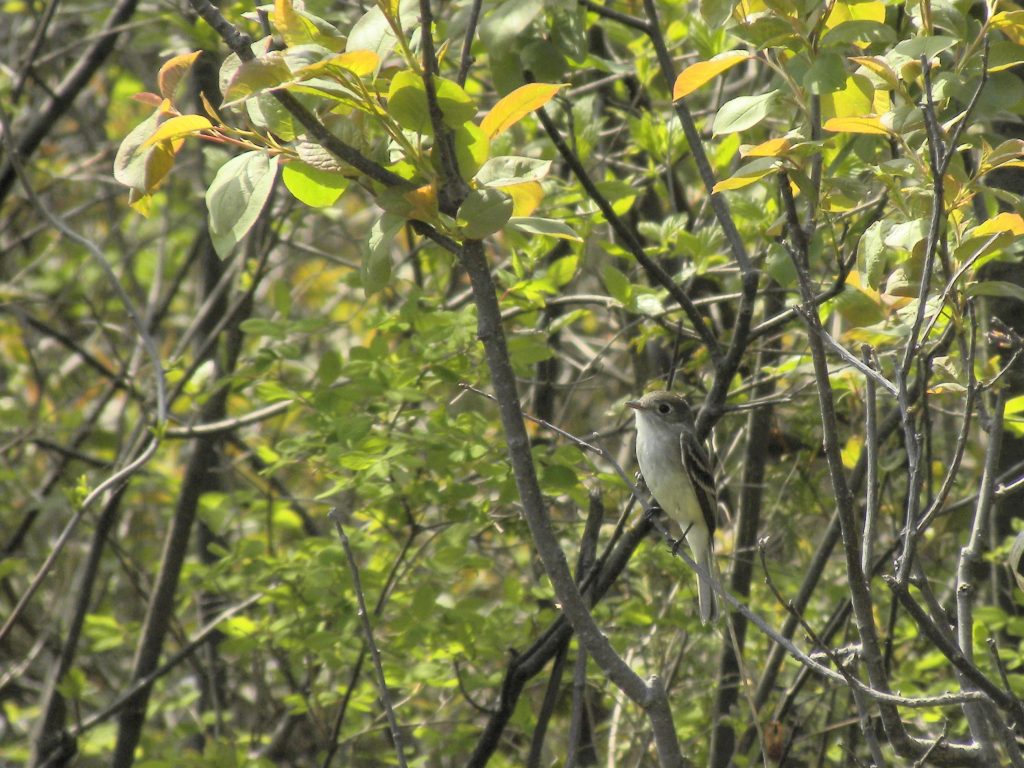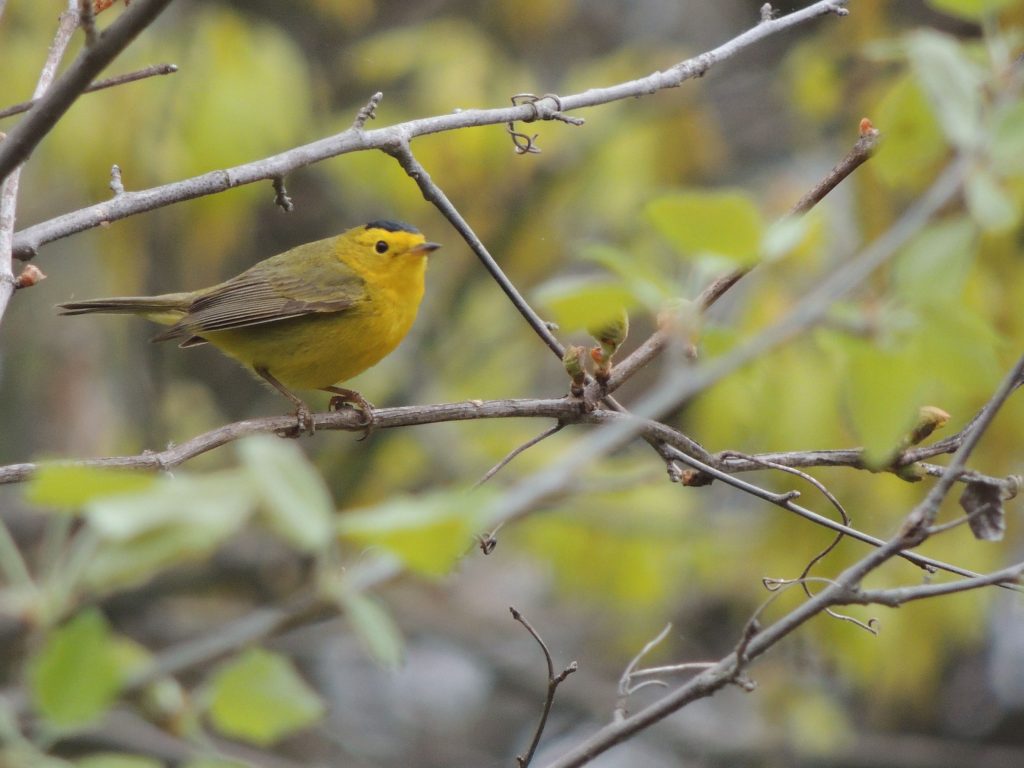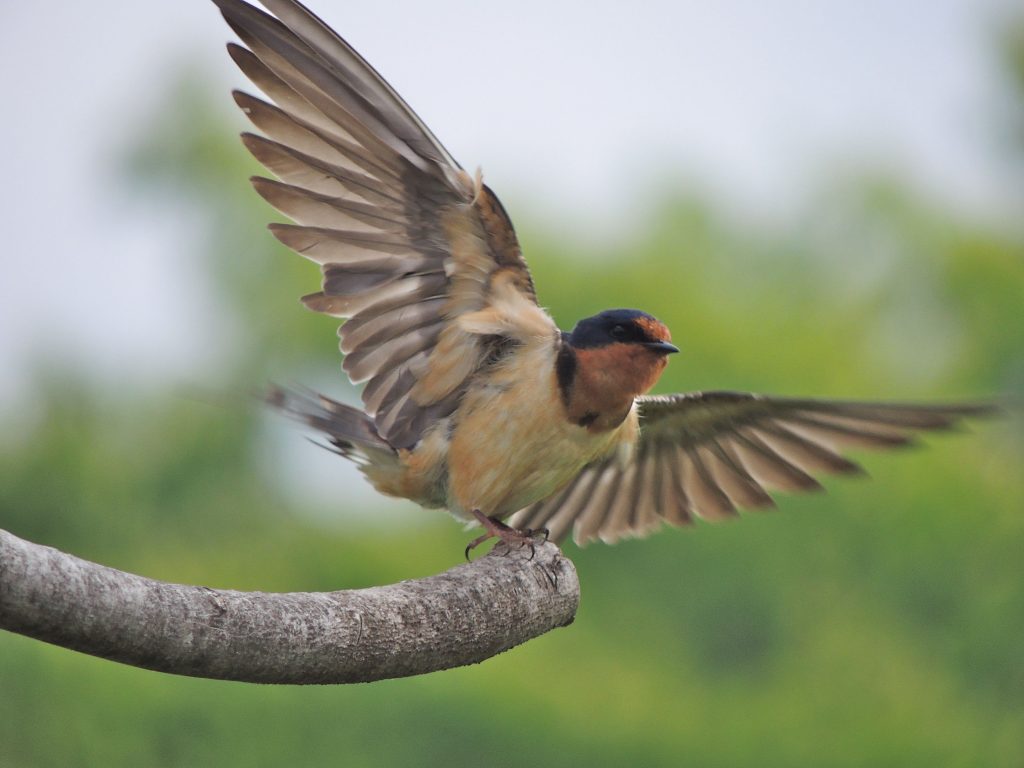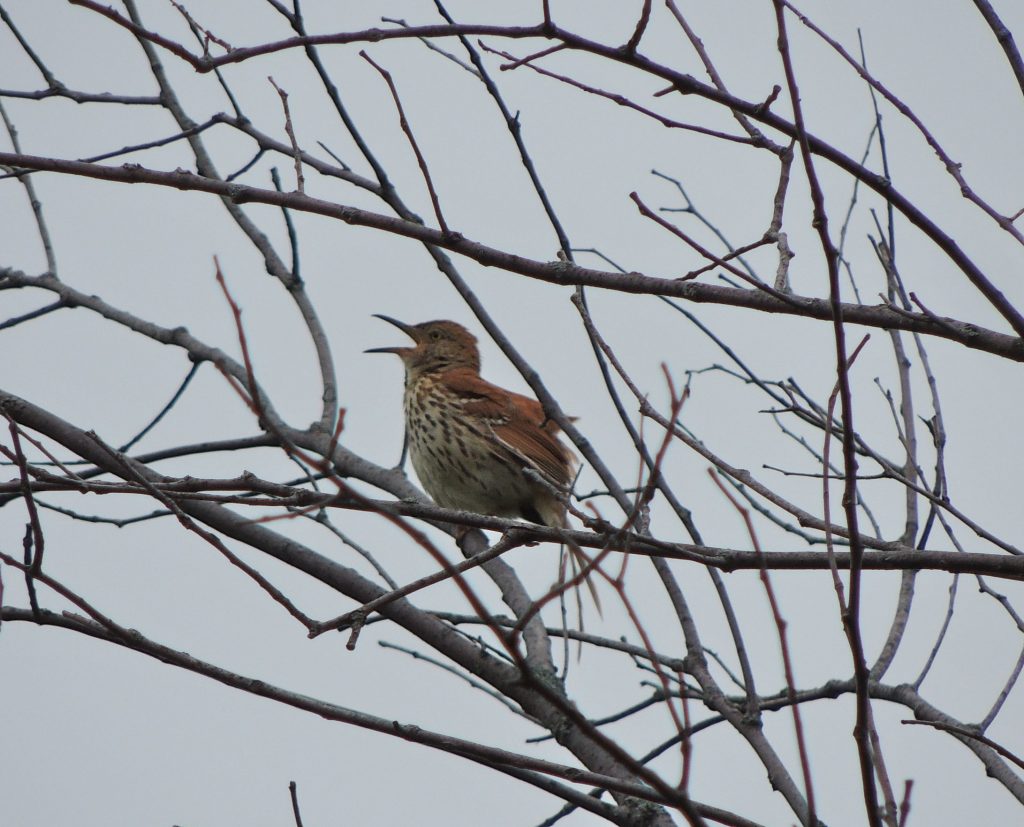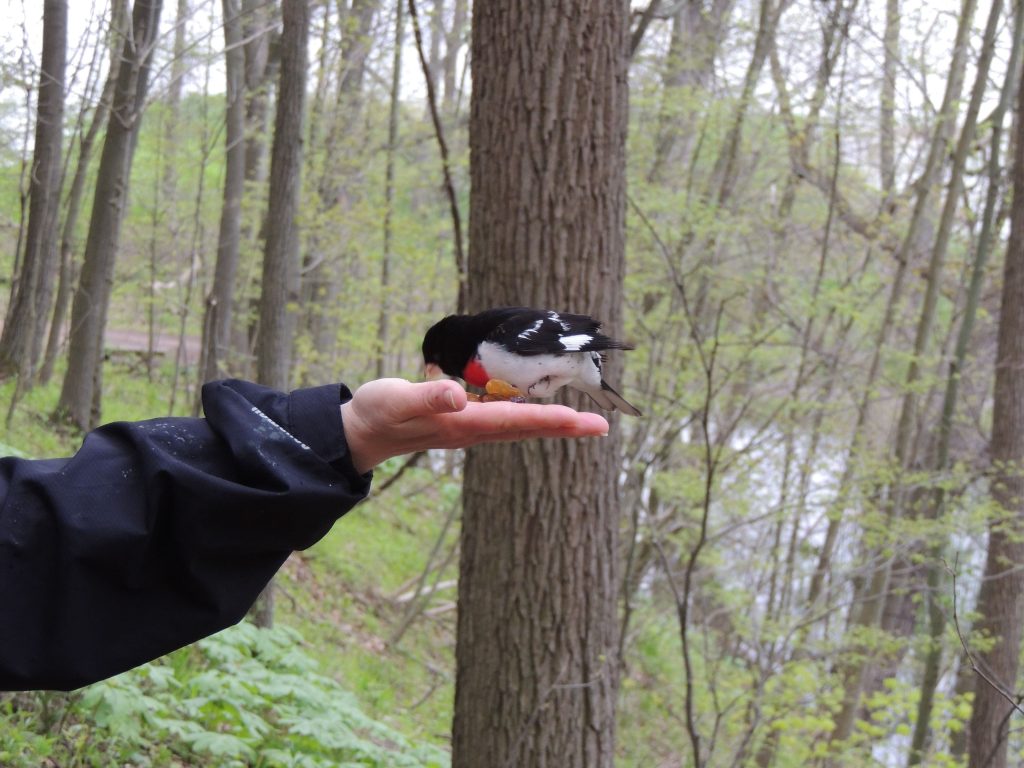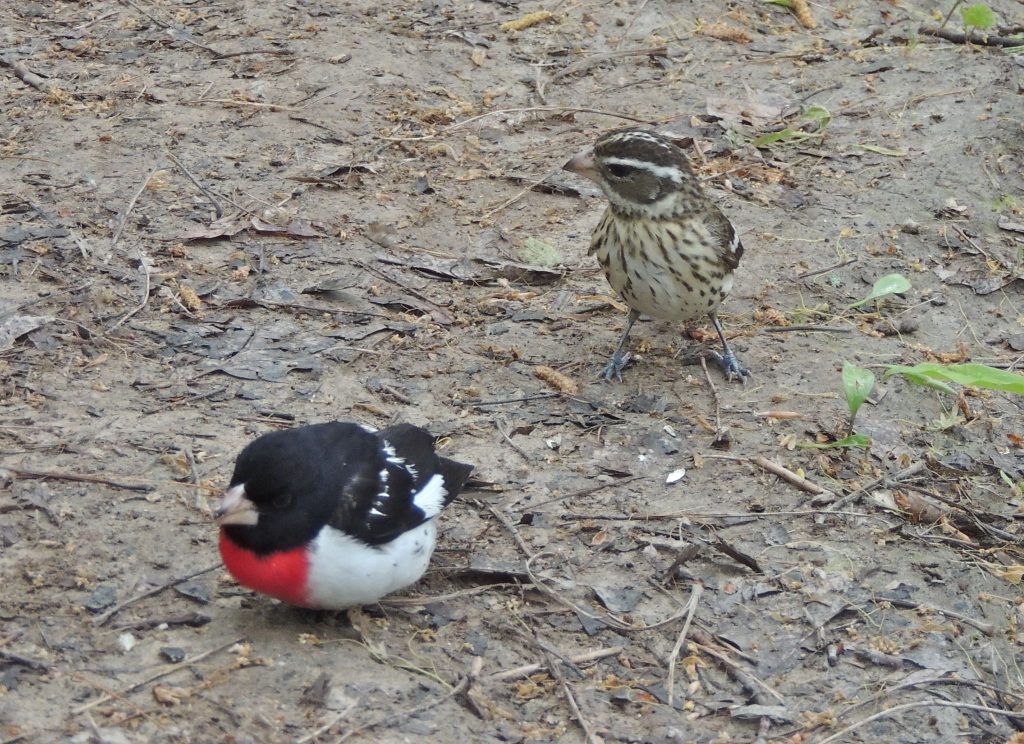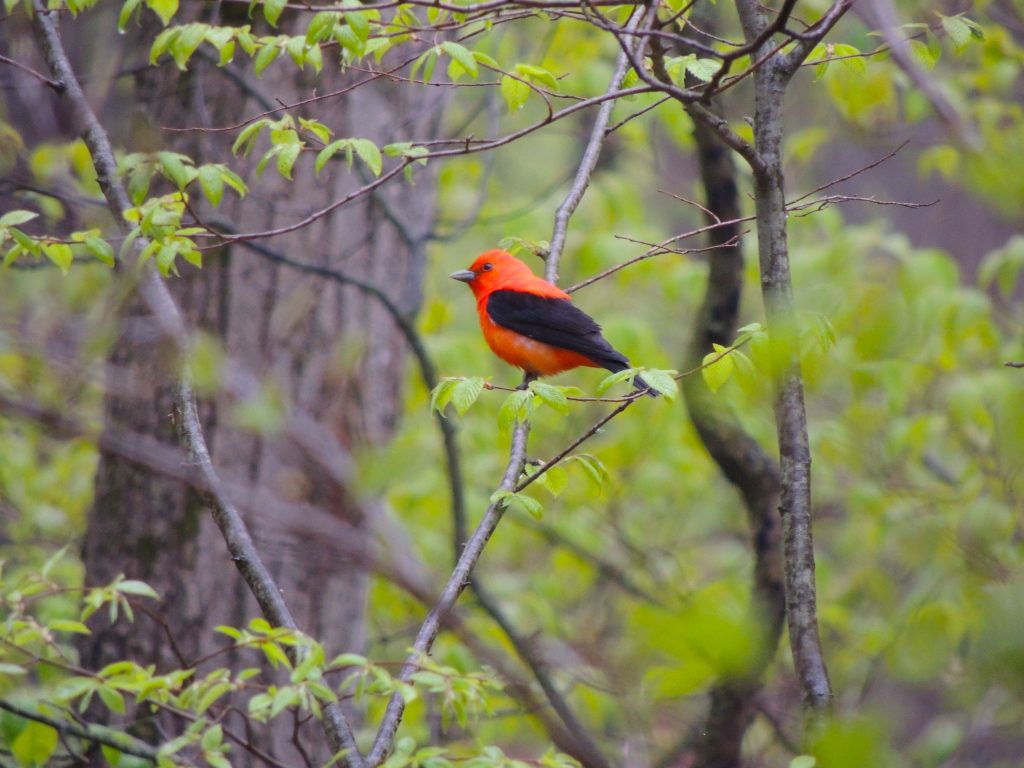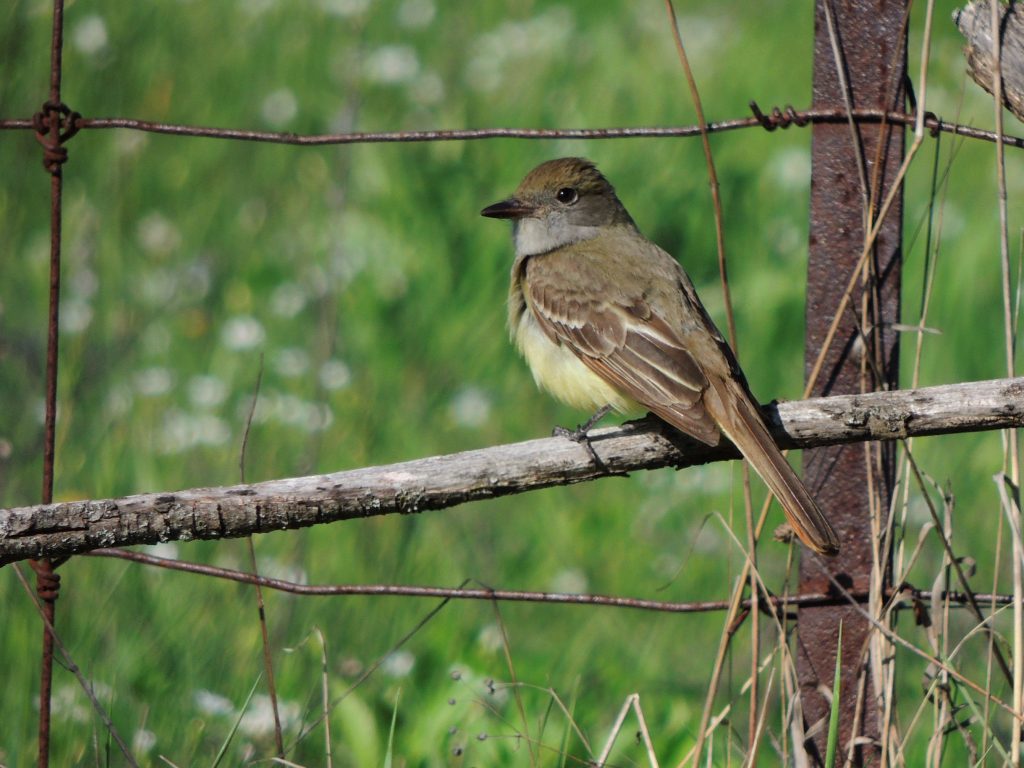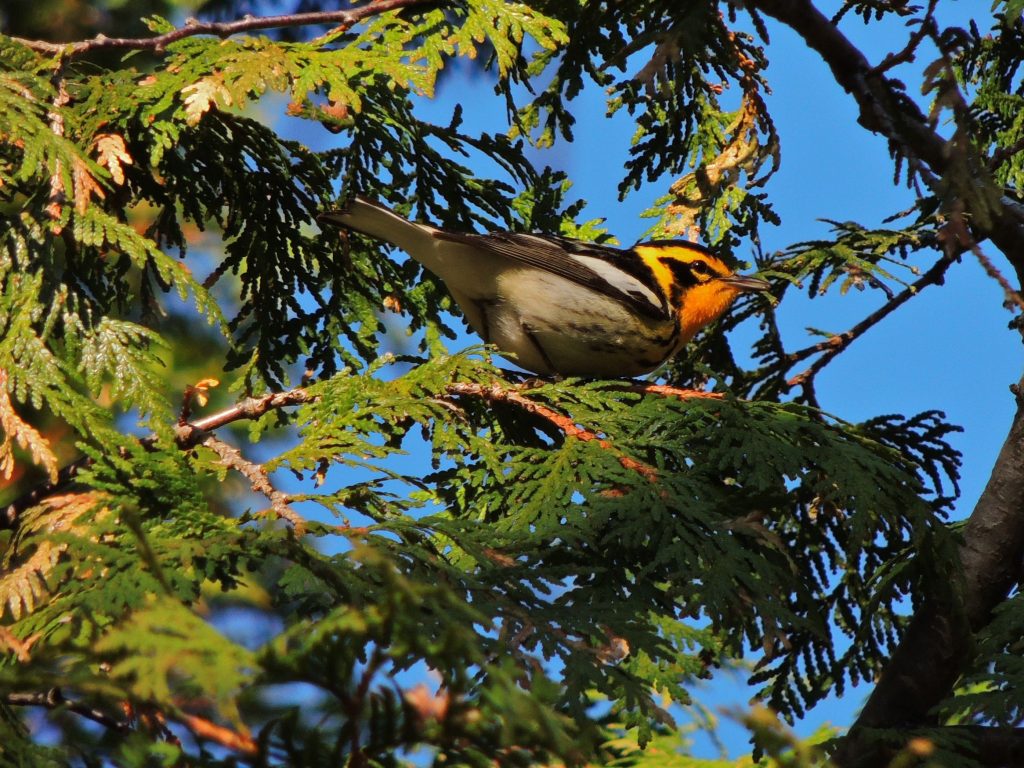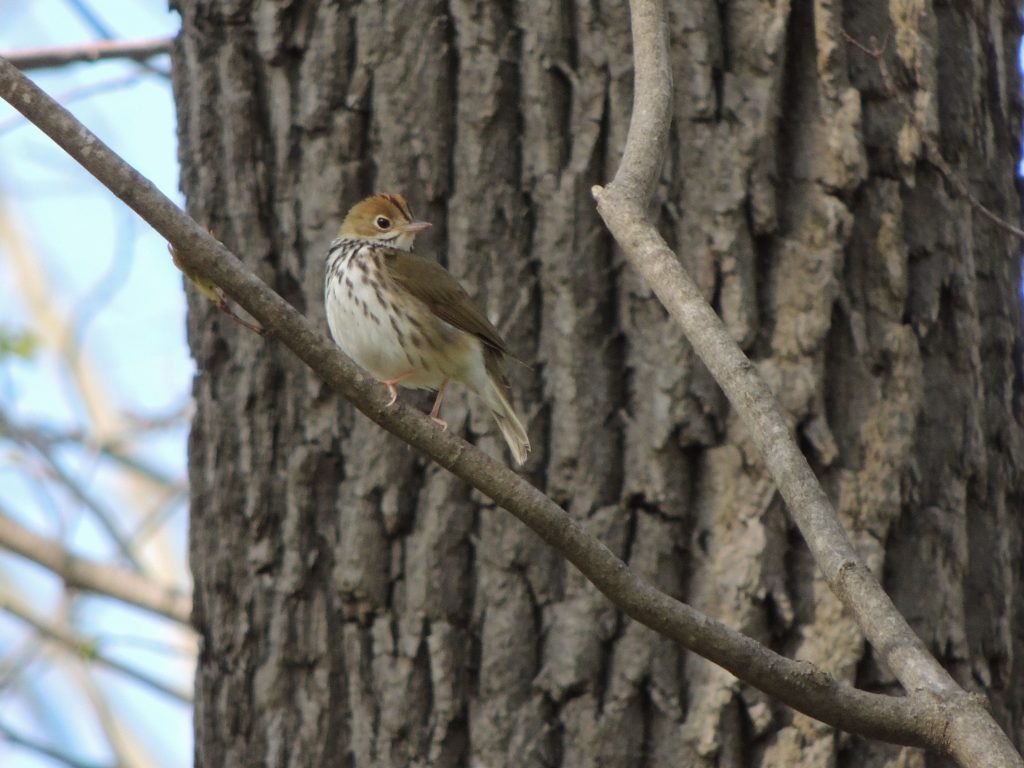June 3 2017.
Point Pelee in south-western Ontario is quite likely, maybe indisputably, the best birding spot in Canada. It is THE birders’ place to be in May, but it’s been perhaps three decades since the last time I was here in May; that’s just the way it works out. But here we are, it’s June and I’ve spent much of the day at Point Pelee. The binocular-crowds of May have gone and the sunscreen and sandals crowds are in. Pelee is just a rest-along-the-way for us, Dan and I are at the start of a week-long trip to explore the wilds of Michigan; in quest of birds of course. Although Dan has done the research, at the time of writing, I have little idea what to expect of Michigan
Shortly after leaving home this morning we made a short stop in the hope of seeing a Mourning Warbler. It would be a lifer for Dan (he’s from British Columbia) and pretty darn appealing for me too. To cut a longish story short our target site was a short walk from the road and despite the early hour and being quite cool, clouds of determined mosquitoes plagued us the whole way. But as if to make up for the inconvenience, we found a Mourning Warbler almost without trying and just where I had half expected it. We stopped at a small wood-platform look-out and the bird just flew in to see who we were and what business we had being there. It was early morning, long before cyclists, runners and dog-walkers might be expected on the trail and somehow it all fell into place. We gasped as it circled and stopped to get a better look at us. Presumably expecting I’d want some nice photos, it chose a suitable perch, not too far, not too high and not too cluttered and just sat there. Click, click, click (well more like twenty) and Bird of the Day for plenty of good reasons. Here it is, a very elegant, slightly reserved dresser.

This is the male, the female lacks the jet-black bib.
Three hours later we were on Point Pelee and found some exceptional birds, I think we agreed on Prothonotary Warbler, Black Tern and Yellow-billed Cuckoo as the best three of a respectable afternoon tally; the cuckoo was another lifer for Dan.

Even though a Prothonotary Warbler, like a measure of pure sunshine glowing in the dankness of its favoured black-water swamp habitat, is a stunning bird, and even though it’s one of those endlessly sought-after Ontario birds, and even though I can scarcely remember the last time I saw one, it couldn’t dislodge the Mourning Warbler from its Bird of the Day perch.
Tomorrow we go looking for Henslow’s Sparrows (a lifer for me), Dickcissel ( a near-lifer) and after that Kirtland’s Warbler.
